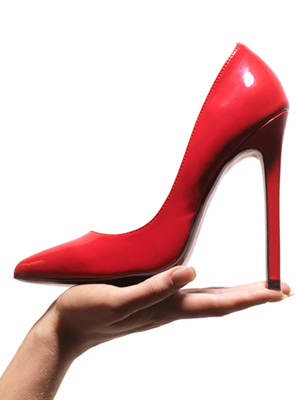Easy ways to exercise
 So what’s stopping you from going to the gym? A study from George Washington University Medical Center this year says that for many women, it’s about feeling self-conscious: You don’t want to exercise in front of young, fit gym rates, or you’re not comfortable using those machines that look like torture devices. All that may be true. But we guess that the answer is a lot simpler: You’ve got a million other demands on your time – and probably your wallet, too – that put a gym membership pretty low on your list of priorities.
So what’s stopping you from going to the gym? A study from George Washington University Medical Center this year says that for many women, it’s about feeling self-conscious: You don’t want to exercise in front of young, fit gym rates, or you’re not comfortable using those machines that look like torture devices. All that may be true. But we guess that the answer is a lot simpler: You’ve got a million other demands on your time – and probably your wallet, too – that put a gym membership pretty low on your list of priorities.
Whatever your reasons, if you want to skip the gym, that’s fine. You can still get the exercise you need to stay fit, healthy, and yes, slim. In fact, some even feel that the gym might be less useful than exercising on your own. At a gym, people aren’t always as familiar with the equipment, so even with the best intentions, they can’t optimize their workouts, or don’t’ know what levels to use. The cardio you can get at home or around your neighborhood – things like jumping rope, jogging, skating, taking a bike ride- are simple, basic activities anyone can do, and they can be more effective than the machines at the gym because you can’t fake or skimp on them. But to make at-home exercise work, it has to be “sustainable”, that means it has to be easy to fit into your crazy day. Experts give us their top tips on how to do exactly that.
Exercise “Snacks”
As you’ve probably heard, to get the basic health benefits of exercise, you’re supposed to do 30 minutes of moderate-intensity cardio (walking, biking, gardening, rollerblading) per day, five days a week, plus do something to strengthen your muscles on two days, according to the Centers for Disease Control and Prevention. That can sound daunting. But it doesn’t have to be. You don’t have to do all of your exercise at once. You can break it up into two or even three or more short bursts and get basically the same benefits.
There may even be some advantages to splitting up your session. We call these short stints “exercise snacks” because they let you burn the same cardio and strength benefits, and they’re so manageable that anybody can find 10 minutes. There’s also a theory that because exercise temporarily boosts your metabolism, getting three of those boosts could and help you burn calories faster.
Find the time – literally
One reason exercise programs fail is that they’re not set up to fit in with the demands of your real life. That’s why experts recommend customizing your fitness around your needs and responsibilities. First of all, sit down at the kitchen table with a piece of paper and map out your week in half-hour chunks. Then cross out every half-hour non-negotiable segment when you know you can’t exercise – like the time it takes you to drive to work or your weekly church service. When you’re done, you’ll have a picture of exactly how you’re using your time, and you’ll be able to see where there are viable slots for you to work in exercise. (But even if all your time seems to be crossed out, don’t worry. We’ll have some multitasking methods for you, too!) Most people do find they have a lot of 15-minute slots, and changing it out lets you understand the big picture of where your time goes.
Make date night a workout
 That’s right: Get your workout in during date night. Before you roll your eyes, read on: Exercising together can be surprisingly romantic. Go to the pool instead of (or before) going to a restaurant. Take a stroll through the moonlit snow. Go square-dancing or swing-dancing. Sign up for a yoga class together and then giggle about it together afterward. Ellen and her husband made it work by agreeing that every time they went out to eat, they would park at least 20-minute walk away from the restaurant so they’d have to burn some calories even before the candlelit dinner.
That’s right: Get your workout in during date night. Before you roll your eyes, read on: Exercising together can be surprisingly romantic. Go to the pool instead of (or before) going to a restaurant. Take a stroll through the moonlit snow. Go square-dancing or swing-dancing. Sign up for a yoga class together and then giggle about it together afterward. Ellen and her husband made it work by agreeing that every time they went out to eat, they would park at least 20-minute walk away from the restaurant so they’d have to burn some calories even before the candlelit dinner.
Step it up!
The right goal is the goal you can meet. You’ll hear people tell you to walk 10,000 steps a day, for instance, and that’s an admirable target. But the fact is that the average woman walks 2,000 steps a day, so that’s not realistic. Any time you’re trying to make a change, you have to take a baseline reading and then make reasonable alterations you can stick to. Getting a pedometer to see how much walking you’re already doing, and then gradually increase your step goal (you should be able to pick one up for less than $20 at sporting goods store or amazon). That way, you’ll avoid a letdown. Experiment, like 45-year-old Ellen, an IT specialist, who started pacing with her pedometer while she talked on the phone – and discovered that she’d clocked a whole extra half mile. See what happens if you take an extra loop around the supermarket or the mall. Small amounts make a difference.
Online ideas!
Your best exercise accessory may be your computer. If you’re planning short walks or jogs to get in some cardio, use Google Maps to find routes to your favorite places and combine your errands with cardio. If you don’t know where you want to walk, try outwalkscore.com, which rates your neighborhood on walkability and also lists coffee shops, parks, and grocery stores within walking distance. No matter where you do, invite a friend to keep you motivated.
Write it down (or type it in)
Keeping a journal can help you see your progress (and remind you that you are moving forward when you hit a plateau). Chart out how many reps or steps you want to do in a day and cross them out as you do them. Plus longer-term tracking helps you stay motivated. There are now more high-tech ways to follow this age-old advice. One of them is fitday.com, a free site that allows you to track your exercise (and your food intake, if you’re dieting) and slice and dice your data to see your progress in different ways. For the hard-core athletic techie, use Adidas miCoach Zone (available at shopadidas.com for about $70), easy-to-wear sensors that track your heart rate, calorie burn, and other stats; miCoach also offers you access to professional coaches and fantastic social network of support.

